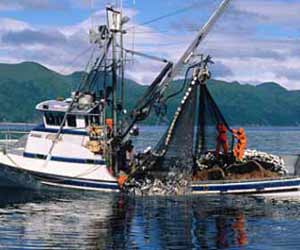Alaska Fishing Industry Overview
The fishing industry is Alaska’s largest private employer and employs approximately 60,000 people for seasonal and year-round employment. The state’s fisheries average over a billion dollars per year and account for more than 60 percent of the dollar value of fish and seafood landed in the United States. A high percentage of it is shipped off to Japan, where Alaska seafood is highly prized.

The region, harvesting method, and season in which a given species of fish, such as Chinook salmon, is harvested is known as a fishery. Each of these fisheries has regulated vessels, gear, and harvesting techniques. In JobMonkey we have divided Alaska into five distinct fishing regions. JobMonkey introduces you to the following fisheries: salmon, herring, halibut, crab, and groundfish.
While salmon harvests in many regions have generally been excellent, longline halibut, black cod, and many other bottomfish harvests have been strong as well. Additionally, the market for opilio crab has taken off, and king crab stocks are rebounding from lows in the 1980s. All in all, it’s a great time to work in the Alaska fishing industries.
A substantial 57 percent of fishery jobs are filled by non-residents of the state. This is good news for those wishing to head north in search of a job. Before you do, however, it’s important to have a thorough understanding of the different subdivisions and peak seasons of the industry.
The salmon fishery is almost exclusively a summer fishery, making it ideal for college students and anyone looking for summer work. The first runs start in mid-May, and the last major runs end in October, with a small king salmon troll fishery running through the winter in Southeast.

